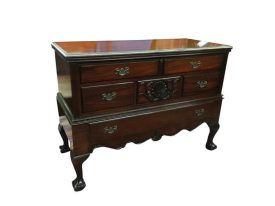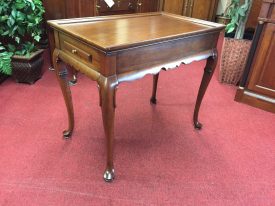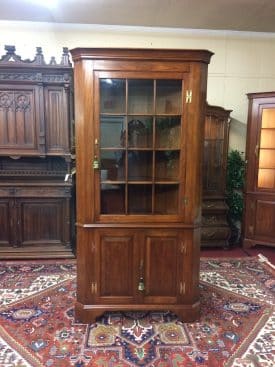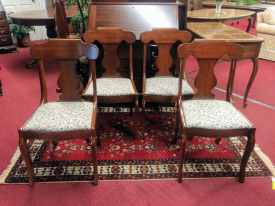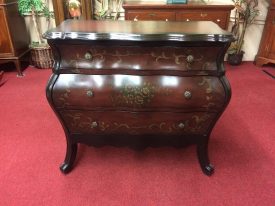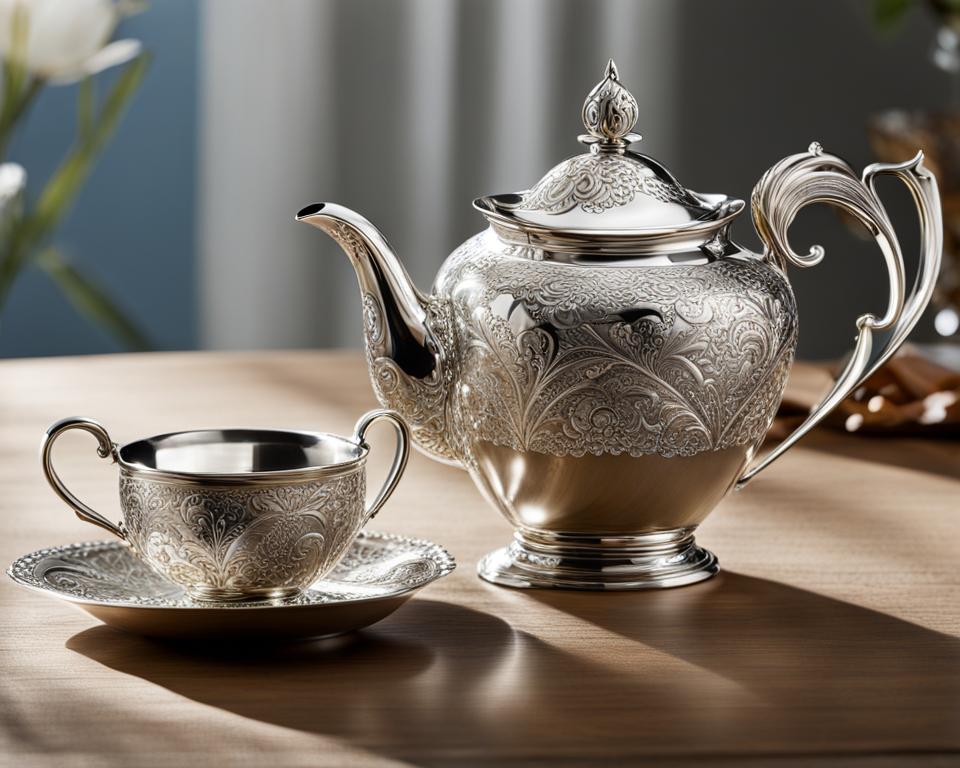As we usher in 2024, the landscape of interior design ushers in fresh perspectives on furniture aesthetics, guided by an enlightened consumer’s desire for both function and flair. With a keen fall-eye view on the current trends in furniture design for 2024, industry insiders reveal a burgeoning inclination toward pieces that champion longevity and personal expression, insinuating a notable shift from fleeting fashion to enduring elegance. The furniture design trends 2024 seem poised to redefine our living spaces, with modern sensibilities that balance innovative design with timeless appeal. These emerging modern furniture trends are intently focused on sustainable, individualized, and adaptable fixtures that not merely fill a room but tell a story – the homeowner’s unique narrative.
Key Takeaways
- Personalization and longevity are keystones in furniture design for 2024, reflecting a growing consumer interest in tailored living.
- High-quality, custom-made furniture is becoming the gold standard as more people invest in their home environments for the long term.
- Expect to see materials and styles that defy the ephemeral in favor of versatile and sustainable elegance.
- Eco-conscious materials and mindfulness of the furniture footprint underscore a responsible approach to design.
- The interplay of tradition and innovation characterizes the modern furniture trends, where form and function achieve a harmonious balance.
- Curated pieces that cater to individual tastes without adhering strictly to current fads signal a shift towards more expressive living spaces.
Fusion of Timelessness and Contemporary Style in Furniture
The year 2024 marks an era where the concept of innovative furniture design transcends the ephemeral and gravitates towards a realm where timeless furniture and contemporary style converge. Inspired by the permanence of cherished heirlooms, such as the family dining table that witnesses generations of stories, contemporary furniture now seeks to offer not just a momentary whim of trendiness but also a steadfast allure that endures.
Ambassadors of this philosophy, such as noted designer Brad Ramsey, advocate for a personalized approach to furniture selection. He underscores the importance of choosing elements that capture an individual’s essence without capitulating to the transient whims of fashion.
“Innovative furniture design is about creating pieces that not only resonate with the present aesthetics but also possess the tenacity to remain relevant and beloved as the notion of contemporary evolves,” reflects Ramsey on the current movement.
As a practical illustration of this harmony between innovation and timelessness, consider a sleek sofa that captures the minimalist spirit of contemporary style, yet is upholstered in a classic fabric that refuses to retire into obsolescence. Perhaps a coffee table incorporates modern smart technology but features a design inspired by mid-century modern simplicity. Such pieces exemplify the fusion trend that is as much about invigorating spaces today as it is about ensuring their charm persists tomorrow.
- Maintain personal identity in design choices
- Ensure lasting appeal and function beyond trends
- Embrace quality craftsmanship for longevity
The vision for furniture in 2024 is clear: to invest in furnishings that confidently stand at the intersection of time-honored allure and present-day innovation. Adopting this approach to interior design invites a sense of continuity in our rapidly changing world, offering a space that is not just a house but a timeless home.
Custom Furniture: From Impulse Buy to Thoughtful Investment
Gone are the days when custom furniture was considered a luxury inaccessible to the average homeowner. Today, with the evolving landscape of interior decoration, we observe a marked shift towards pieces that offer both style and functionality tailored to one’s living space. Notably, the Southern states, as per insights from renowned interior designer Brad Ramsey, are setting a trend in 2024; they lean towards thoughtful investment in furniture that reflects personal aesthetics and practical needs over time. This transition from impulsively picking standard, ready-made furniture pieces off retail storerooms towards meticulously crafted, made-to-order selections illuminates the new era of lifestyle furniture.
Longevity in Furniture Design
The concept of longevity in furniture design is gaining traction as individuals recognize the importance of sustainability and enduring style. Custom pieces are inherently designed to last, integrating high-grade materials with craftsmanship that stands the test of time. The result is a thoughtful investment in furniture that does more than fill a space—it enhances the quality of living for years to come.
The Shift Toward Personalized Home Layouts
As homeowners become more involved in the curation of their living environments, the inclination towards personalized home layouts comes to the forefront. Pre-designed furniture often fails to meet the unique spatial requirements of various homes, a limitation overcome by bespoke pieces. Custom furniture is not just about aesthetic customization; it caters to functional preferences and adapts fluidly to the designated area, whether it’s accommodating a home office under a staircase or crafting a built-in closet for a small bedroom. The rise of custom furniture underscores a larger movement towards thoughtful interior design—a space that works for you, not against you.
| Custom Furniture Feature | Benefits | Long-Term Value |
|---|---|---|
| Bespoke Design | Meets individual style and functional needs | Aesthetically pleasing; increases homeowner satisfaction |
| Quality Craftsmanship | Higher durability and better material usage | Less frequent replacements; cost-effective over time |
| Adaptability to Space | Maximizes use of available space | Enhances property appeal with optimized home layouts |
In conclusion, embracing custom furniture is more than a trend; it’s a reflection of the changing dynamics in homeownership. Focusing on what truly matters—quality, individuality, and practicality—this approach to furniture selection heralds a future where every piece in one’s home resonates with personal narrative and design integrity.
The Resurgence of Rich Wood Tones
The opulence and depth of rich wood furniture are making a triumphant return in the upcoming year, as noted by prominent interior designers like Shelagh Conway. Within this trend, walnut wood tones stand out as a symbol of luxury and warmth, making a significant impact on luxury furniture trends. The sumptuous hues of walnut wood offer a blend of elegance and comfort, suggesting that furniture trends in 2024 will emphasize materials that can create an inviting yet sophisticated atmosphere in any living space.
As Brad Ramsey affirmed, the allure of darker woods lies in their ability to imbue a space with a sense of intimacy, transforming the simplest of interiors into areas of serenity and richness. Furniture pieces that showcase warm brown, reminiscent of chocolate, are expected to become increasingly prevalent. This pivot back to darker wood reflects a growing desire for pieces that not only serve a functional purpose but also act as statement elements, enveloping rooms in their innate warmth.
| Trend | Description | Expected Impact |
|---|---|---|
| Walnut Wood | Rich, deep tones with complex grain patterns. | Introduces timeless sophistication and durable charm. |
| Chocolate Shades | Warm and enveloping hues reminiscent of cocoa. | Invites a cozy, intimate feeling into home settings. |
| Luxury Appeal | Signifies opulence, enhancing the overall allure of the space. | Elevates decor style, providing an affluent edge to interiors. |
This revival of rich wood furniture is not only a nod to the inherent beauty of natural materials but also to the yearning for sustainability and longevity in furniture choices. The shift toward dark wood tones like walnut is an expression of a refined lifestyle where luxury melds seamlessly with a commitment to quality and craftsmanship, setting the stage for a year of discerning style choices in the world of furniture design.
Embracing Earth Tones: A Nod to Natural Beauty
Reflecting the splendor of the world outside our windows, earth tones furniture is taking center stage in home décor, championing themes of serenity and wellness. Design experts Brad Ramsey and Ginger Curtis reveal a significant tilt towards a palette that pays homage to the natural beauty in design. This move towards organic hues is more than a whimsical trend—it’s a response to our collective yearning for a tranquil refuge in our living spaces.
Warm Upholstery Colors Taking the Lead
As interior design continues to draw parallels with the natural world, a swath of warm, embracing colors is cropping up in upholstery. Browns that whisper of sturdy tree trunks, greens that echo the freshness of new leaves, grays that resemble pebbles glistening under a stream, and muted reds that bring to mind the soft blush of desert sandstone. These colors aren’t just beautiful; they symbolize stability, comfort, and a sense of grounding, which are more important than ever in the hustle of modern life.
The Botanical Influence in Modern Furniture
One cannot discuss the influence of nature in interior design without noting the rising presence of botanical prints. The intricate patterns and soft, natural lines of leaves, flowers, and vines bring an element of the outdoors into our homes, creating a seamless blend between our interiors and the natural world. This resurgence of greenery-themed accents presents itself in the sustainable furniture trends, which are not just refreshing to the eye but also speak to the environmental ethos that is fast becoming integral to the ethos of furniture design.
Sustainable Choices: Eco-Friendly Materials in the Spotlight
As eco-consciousness takes root in the furniture industry, sustainable furniture trends are gaining momentum in 2024. Designers and consumers alike are turning towards materials that leave a lighter footprint on the environment. Particularly, the use of bamboo furniture is on the rise, thanks to its remarkable sustainability profile and the versatile aesthetic it offers. Ginger Curtis has observed this shift, advocating for the integration of eco-friendly materials in functional home décor to promote environmentally responsible living spaces.
Consumers are increasingly seeking out furniture that aligns with their environmental values, pushing bamboo furniture and other sustainable options to the forefront of design.
With a heightened awareness of our ecological impact, the furniture design landscape is seeing a surge in materials known for their renewable properties, low emissions in production, and recyclability. Here’s a look at how some of these materials stand against traditional choices:
| Material | Renewability | Durability | Eco-Friendly Feature |
|---|---|---|---|
| Bamboo | Highly renewable (fast-growing) | Strong and durable | Biodegradable, low VOC emission |
| Reclaimed Wood | Sourced from old structures | Varies based on original wood quality | Prevents deforestation, reduces waste |
| Recycled Metal | Infinitely recyclable | High strength, less prone to fatigue | Conserves natural resources, less energy-intensive |
| Recycled Plastic | Recyclable, but quality degrades | Less sturdy than virgin plastic | Reduces plastic waste, low energy recycling process |
The table above not only highlights the sustainable furniture trends but also illustrates the ongoing shift in consumer preferences as they embrace home furnishings that are both stylish and kind to our planet. Whether it’s choosing a bamboo bookshelf or a recycled metal lamp, the principles of sustainability are becoming deeply engraved in the choices of discerning customers who recognize that the future of furniture lies in responsible sourcing and manufacturing practices.
Curves Over Edges: The Softening of Furniture Silhouettes
As we look to 2024, the presence of curved furniture becomes increasingly pronounced in homes that echo a tranquil and welcoming atmosphere. Gone are the days when sharp lines dominated the landscape of interior decor; instead, rounded furniture styles carve out a perennial niche in the realm of minimalist furniture design. Shelagh Conway, among other prominent designers, heralds this evolving trend as pivotal to creating serene and nurturing environments.
The allure of curves is undeniably universal, evoking a sense of simplicity and comfort that harmonizes with the minimalist ethos but also provides a visually gratifying experience. This trend is less about grandiosity and more about fostering a subtle, organic flow within living spaces. Below is a comparative illustration highlighting the characteristics of curved versus traditional furniture designs:
| Feature | Curved Furniture | Traditional Angular Furniture |
|---|---|---|
| Visual Aesthetics | Smooth, flowing lines | Sharp, geometric shapes |
| Comfort Level | Emphasizes ergonomics and soft edges | Focuses on structural form |
| Space Dynamics | Creates the illusion of more space | Defines and occupies space |
| Design Principle | Organic, human-centric approach | Based on architectural lines |
| Ideal Decor Style | Complements minimalistic and contemporary | Suits modern and industrial themes |
The embrace of curves is not restricted to any particular type of furnishing; it is evident across a multitude of items, from sofas with sloping armrests to coffee tables bearing elliptical surfaces. Designers are crafting these pieces with a conscious effort to soften the overall look and feel of a room, thereby ushering in an era where comfort merges seamlessly with style.
Mixing Eras: Eclectic is the New Chic
In the dynamic world of interior design, eclectic furniture design is taking center stage as the embodiment of a trend that honors personal expression. Imagine walking into a space where the sleek lines of a mid-century modern console blend smoothly with the ornate details of a Victorian armchair—this is the essence of mixing eras in furniture. It’s a curated art form that pays homage to history while embracing the modern pulse of innovative furniture design.
- By pairing a rustic, reclaimed wood table with industrial metal chairs, homeowners create a dining space that tells a story of both past and future.
- Art Deco lighting fixtures might illuminate contemporary minimalist sculptures, suggesting a dialogue between different design philosophies.
- A Victorian-era velvet settee may find a perfect backdrop in a room with stark modern art and clean, geometric shelving systems.
Such a meshing of times and styles transcends the traditional and opens a realm where design is dictated not by a single era but by a harmonious blend of influences. This tailored approach bypasses the ordinary and flourishes into a personalized sanctuary that stands out for its creativity and daring combinations.
“An effective eclectic design is not a random assortment but a carefully constructed tapestry of eras and aesthetics that reflect the inhabitant’s soul,” notes celebrated designer Brad Ramsey. “It’s about the intelligent juxtaposition of the old with the new.”
The goal is to achieve balance and unity amidst diversity, creating spaces that are fluid and evolving—much like the personal tastes and stories they aim to encapsulate. It is clear that in the realm of interior décor, the adventurous and forward-thinking spirit of eclectic furniture design is indeed the hallmark of chic for the modern era.
Redefining the Aesthetic: Anything Goes in Style Selection
The landscape of interior design is undergoing an exciting transformation as we embrace modern furniture trends that defy traditional confines. Personal taste in furniture reigns supreme in the coming year, with a celebration of diverse, mixed styles in design. From sleek mid-century sofas to ornate Victorian chaises, the furnishings of 2024 are an illustration of self-expression and the richness of eclectic assembly.
Interior designer Shelagh Conway champions the idea that each piece of furniture should speak to the homeowner’s unique aesthetic sensibility. Rather than committing to a single trend, individuals are encouraged to blend their cherished belongings with newly-acquired finds, curating a personalized space that tells their story.
“Forget the ‘rules’ of the past. It’s your home; let it reflect who you are, with pieces that make you feel connected, relaxed, and truly at home. The synergy of different historical contexts and design approaches is where we find new beauty and comfort,” Conway advises.
- Bold juxtaposition of a modernist table with antique chairs
- Fusion of Scandinavian simplicity with opulent Art Deco accessories
- Layering of minimalist aesthetics above rich, maximalist textures
- Interplay of rustic elements with contemporary lines
Above all, the freedom to merge various periods, styles, and influences allows for a dynamic evolution of interior spaces, breathing new life into the concept of home. What emerges is a thoughtfully curated ambiance that fully embraces the eclectic nature of modern furniture trends.
Artistry in Furniture: The Rise of Unique, Eye-Catching Pieces
The realm of interior design is experiencing an uptick in demand for artistic furniture pieces that boldly carve out their presence in any space. Highlighted by Interior Expert Shelagh Conway, the landscape is increasingly favoring furniture that merges unique design in furniture with functional art. Reflecting luxury furniture trends, these statement pieces are not just furnishing an area; they’re enhancing the aesthetic narrative of the entire living experience.
Intricately designed and crafted to draw the eye, these distinctive offerings channel the ethos of luxury and innovation. From sculptural tables to ornate armoires, the convergence of artistry and utility in these pieces is emblematic of a design philosophy that places an emphatic premium on individuality and craftsmanship.
“Furniture is now receiving the spotlight akin to a piece of fine art. It’s no longer about blending in but standing out and becoming a conversational centerpiece.” – Shelagh Conway
| Artistic Feature | Description | Example | Design Benefit |
|---|---|---|---|
| Sculptural Silhouettes | Audacious shapes that defy traditional forms. | Wave-inspired chaise lounges | Adds movement and a modern twist to spaces. |
| Bold Color Schemes | Palettes that transcend the ordinary and embolden the furniture as a statement. | Emerald green velvet sofas | Creates a focal point and infuses personality. |
| Mixed Materials | The use of contrastive materials for tactile and visual interest. | Glass and rough-hewn wood dining table | Texture diversity adds depth to design. |
| Handcrafted Details | Artisanal elements showcasing exceptional craftsmanship. | Carved wooden headboards with intricate motifs | Invokes a sense of grandeur and exclusivity. |
| Interactive Installations | Pieces that engage the user or transform in use. | Modular shelving systems | Adaptability and engagement in the home’s arrangement. |
Each piece emerging in today’s forefront of luxury furniture trends sings a unique story—whether it’s through the whispers of handcrafted details or the bold statements of form and color. These are more than mere functional items; they are the muses of living spaces that communicate richness and creativity in home décor.
- Fostering a dialogue between the furniture and its environment, these pieces elevate the home into a gallery of modern-day opulence.
- They represent an evolving era where homeowners are seeking to express themselves not just through the clothing they wear but also through the unique design in furniture that populates their most personal spaces.
- Embracing these trends, consumers are increasingly willing to invest not only financially but also emotionally in artistic furniture pieces that echo their idiosyncratic visions for their abodes.
Ultimately, as we continue to witness this upsurge in artistically driven luxury furniture, we can expect interiors to become ever more curated and personalized, where the lines between art and furnishing are beautifully blurred.
Performance Fabrics: A Staple in Furniture Design Trends 2024
The integration of performance fabrics in furniture design is predicted to not only continue but flourish in the year 2024. With advancements in technology in furniture design, these high-endurance materials are proving essential in meeting the practical demands of modern living without compromising on the aesthetic appeal.
One of the most significant contributions of performance fabrics is their ability to blend seamlessly into various design narratives—from mimicking the luxury of velvets to the casual elegance of linens. The following table showcases some of the key attributes that make performance fabrics a go-to choice for both indoor and outdoor furnishings.
| Performance Fabric Feature | Benefits in Furniture Design | Application Examples |
|---|---|---|
| Durability | Resists wear and tear, making it suitable for high-traffic areas | Sofas, dining chairs, office upholstery |
| Stain Resistance | Easy to clean and maintain, ideal for homes with kids and pets | Kid’s playroom furniture, pet-friendly seating |
| UV Resistance | Colors remain vibrant even with prolonged sun exposure | Patio sets, poolside loungers |
| Moisture Resistance | Prevents mold and mildew, ensuring longevity | Outdoor sectionals, bathroom seating |
| Eco-friendly Options | Reduces environmental impact with recyclable and sustainable options | Eco-conscious brand collections, green-certified products |
| Aesthetic Versatility | Matches diverse design styles, from contemporary to rustic | Accent chairs, decorative pillows, window treatments |
Renowned in the industry for their resilience and versatility, performance fabrics align perfectly with the evolving landscape of furniture design that values not only style but substance.
Inviting Optimism: Warm Shades and Playful Details
As we venture into 2024, the terrain of furniture design is lush with optimism, as evident in the creative work of designers like Roxy Owens. Imbuing spaces with positivity, the trend forecast promises an array of warm shades in furniture, mirroring the golden hues of a placid sunset. Enthusiasm bubbles in the shapes and colors of the everyday habitat, with playful furniture details infusing an undeniable joie de vivre into modern homes.
The Cheerful Palette of 2024’s Furniture Design
Color is not merely a visual pleasure but an intrinsic mood enhancer in this forthcoming era of design. Nestling amidst the traditional palette, we find cheerful furniture design coming to life through a kaleidoscope of apricot whispers, vibrant marigold blooms, and the tender caress of soft yellows. These sunny tints reflect a collective desire for comfort and happiness within our living spaces, a canvas where our inner serenity can be mirrored in the external world.
Personality Through Detailing: Tassels, Pleats, and Ruffles
Every home tells a story, and every piece of furniture is a paragraph of that narrative. The rising design vernacular of 2024 highlights a lexicon filled with tassels, pleats, and ruffles. Such playful furniture details are reminiscent of a whimsical dance, each movement a pledge to originality and personality. They are not merely decorative but are signifiers of a bustling spirit, of spaces designed to spark conversation and evoke a sense of sartorial elegance.
Material Matters: The Richness of Texture and Print
The allure of artisanal furniture trends lies not only in unique design but also in the sensory experience provided by a mix of materials in furniture. The strategically layered textures contribute to a room’s ambiance and speak to the meticulous craftsmanship behind each piece. Interior designers are leaning towards an eclectic assembly, juxtaposing soft fabrics like Mohair against the rugged, enduring surfaces of vinyl and leather.
A pronounced move toward texture in furniture design brings about an exciting assortment of tactile sensations that can elevate the aesthetic of any interior space. Every material offers a distinct look and feel, creating an interactive environment where the furniture not only serves a functional purpose but also acts as a conduit of personal style.
- Mohair for plush luxury and depth
- Linen for airy, breathable texture that exudes natural elegance
- Vinyl for sleek, modern surfaces that promise longevity
- Leather for a timeless, sophisticated edge that ages gracefully
These material combinations are not only about visual pleasure; they serve a tactical purpose in durability and maintenance—qualities much appreciated in bustling homes where practicality is paramount. Designer Coley Hull encapsulates this trend, stating, “The beauty of these mixed materials is that they can stand up to daily life while offering a palatial feel to the room.”
“The mix of textures and variety in materials adds dimension and character to a room, making each piece of furniture an integral part of the living space’s narrative.” – Coley Hull
Coley Hull’s insights ring particularly true as the trend towards multi-textured interiors mirrors a broader cultural shift towards authenticity and a more grounded way of living. In a sense, the rising popularity of artisanal furniture trends and thoughtfully mixed materials is a reflection of society’s growing appreciation for craftsmanship and sustainability—a trend that is only expected to deepen in the years to come.
Responsible Elegance: Antiques and Vintage Pieces for a Conscious Home
The shift towards responsible furniture buying is creatively redefining the modern home aesthetic. Discerning decorators and homeowners alike are increasingly drawn to the charm and story that antique furniture trends bring to a living space. This growing affinity goes beyond mere nostalgia; it’s about making a conscientious choice for both the planet and personal surroundings.
Integrating vintage furniture into contemporary decor is not only a nod to the quality craftsmanship of bygone eras but also a statement about the longevity and sustainability of such pieces. As designers and environmental advocates alike note, selecting antiques is one of the most resourceful approaches to furnishing one’s home—a perfect example of elegance meeting ecological responsibility.
By choosing vintage and antique pieces, we’re invited to write our chapter in their histories while conserving resources and honoring the ingenuity of the past.
- Antiques as Eco-Friendly Staple: Antique furniture often requires no additional resources to produce, reducing the carbon footprint compared to new manufacturing.
- Enduring Style: Vintage pieces stand the test of time, not only in build but also in style, outlasting fleeting design fads.
- Cultural Storytelling: Every antique item carries with it a narrative, adding a unique depth and character to home interiors.
While the reverence for vintage items grows, so does the enthusiasm for practices that show commitment to preserving the environment. It’s about making choices that honor the intricate beauty and durability of the past while gracefully paving the way for a more sustainable future.
The Return of Jewel Tones: Accentuating with Deep, Rich Colors
The allure of jewel tones in furniture is making a captivating comeback, signaling a shift within contemporary furniture trends toward a palette rich with opulence and character. As noted by celebrated designer Susan Hayward, the coming year is poised to be dominated by the sumptuousness of emerald, ruby, and sapphire hues. These colors not only introduce a sense of luxury to interior spaces but also serve as distinctive accent colors in design, infusing life and energy into a room.
Endeavoring to create a harmonious balance in home décor, these vibrant shades are masterfully paired with the natural beauty of wood. The depth of jewel tones juxtaposed with the earthiness of wood creates interiors that are nothing short of show-stopping. To truly appreciate the integration of these hues in modern spaces, consider the following table which showcases popular jewel tones and their effective pairings with various wood finishes:
| Jewel Tone | Suggested Wood Pairing | Design Impact |
|---|---|---|
| Emerald Green | Warm Oak | Adds depth with a touch of nature’s calm |
| Ruby Red | Rich Mahogany | Evokes timeless elegance and warmth |
| Sapphire Blue | Classic Walnut | Cultivates a sophisticated and bold aesthetic |
| Amethyst Purple | Polished Cherry | Introduces a regal and luxurious vibe |
| Topaz Yellow | Light Maple | Brings in a burst of energy and cheerfulness |
It’s apparent that jewel tones are not merely a fleeting trend but a way to establish a certain mood and tone within an interior space. They offer both versatility and vibrance, allowing for designs that are as timeless as they are modern. As a defining element of contemporary furniture trends, these saturated hues are effortlessly stealing the spotlight, ensuring that any space they inhabit is imbued with an ambiance of sophistication and refined taste.
Conclusion
The design landscape of 2024 heralds a season where furniture design trends are as much about personal expression as they are about enduring quality and eco-minded decisions. Across homes and spaces, we’re witnessing the fusion of individual tastes with a strong commitment to sustainability, illustrating how modern furniture outlooks are being shaped by more than just aesthetic whims. From the embrace of home decor trends that feature warm, nurturing colors, to the integration of materials that pay homage to ecological awareness, the coming year’s trends are poised to redefine interiors with both style and substance.
This year, furniture design trends 2024 reflect a keenness to invest in pieces that speak to the homeowner’s personality while ensuring that their environmental footprint is as light as possible. The juxtaposition of contemporary, bold artistic expressions with the sentimentality of timeless pieces adds layers of complexity and charm to living spaces. As these trends evolve, they sketch out the contours of how people are looking to shape their havens – through choices that are as expressive as they are ecologically responsible.
Ultimately, these trends are not fleeting fashions but a mosaic of what ideal home foundations are becoming – a canvas for personal creativity anchored in an awareness of our planet’s wellbeing. Modern furniture outlooks are envisaging a future where furniture is not just about filling spaces but about creating meaningful environments that mirror the values, aspirations, and ethical concerns of their inhabitants. As we move forward, these guiding principles in furniture design promise to carve out homes that are as unique as they are universally conscientious.
FAQ
What are the defining characteristics of the current trends in furniture design for 2024?
The 2024 furniture design trends are largely characterized by a fusion of timeless appeal with contemporary style, a shift towards customization and personal choice, and a strong focus on quality and sustainability. These trends also favor rich wood tones, earthy colors, innovative uses of materials, eco-friendly options, and elements that bring warmth and playfulness into interior design.
How are modern furniture trends incorporating timeless and contemporary styles?
Modern furniture trends are achieving a balance between timeless and contemporary styles by selecting pieces that offer longevity in design, merging classic aesthetics with innovative forms and functions. This blend allows furniture to remain relevant and stylish through various trend cycles, much like cherished heirlooms that never go out of style.
Why is custom furniture becoming a thoughtful investment in 2024?
Custom furniture is being viewed as a thoughtful investment because homeowners are prioritizing personalized home layouts and lifestyle furniture that aligns with individual needs. Pieces that are tailored to specific room configurations and personal aesthetics are not only more meaningful but are also considered to endure beyond fleeting trend waves, thus providing more value over time.
Which wood tones are seeing a resurgence in 2024 furniture design?
Rich and warm wood tones, especially walnut, are seeing a resurgence in 2024 due to their timeless elegance and ability to impart an intimate and comfortable atmosphere in homes. These wood finishes are becoming predominant choices in luxury furniture trends.
What color palettes are gaining popularity in furniture design for 2024?
Earth tones, such as browns, greens, grays, and muted reds, are gaining popularity as they create a sense of calm and grounding in interior spaces. Additionally, there is a botanical resurgence with foliage-inspired prints and colors, reflecting a deeper appreciation for natural beauty in design which aligns with sustainable furniture trends.
How is furniture design becoming more sustainable in 2024?
Furniture design is becoming more sustainable by incorporating eco-friendly materials like bamboo and emphasizing durability and longevity in each piece. There’s also a growing consciousness among consumers about the environmental impact of their furniture choices, thus influencing trends towards sustainability.
What is the significance of rounded furniture styles in modern design?
Rounded furniture styles signify a preference for softer silhouettes that contribute to a gentler, more inviting living space. Pieces with curved lines and edges are favored over sharp, angular forms in the realm of minimalist furniture design, offering both comfort and aesthetic appeal.
How is the eclectic furniture trend influencing home decor in 2024?
The eclectic furniture trend is influencing home decor by encouraging a mix-and-match approach with pieces from different eras. This ‘tailored eclectic’ style moves away from clutter towards a curated look that reflects personal history and contemporary design, making way for innovative furniture designs that are both unique and cohesive.
Can you elaborate on the ‘anything goes’ approach in style selection for 2024 furniture?
The ‘anything goes’ approach in style selection encourages homeowners to choose furniture pieces based on personal preference without strict adherence to a single design theme. This liberating trend allows for a blend of different styles, creating spaces that can be personal and eclectic while still maintaining a sense of harmony in design.
What role does artistry play in 2024’s furniture designs?
Artistry is becoming increasingly important in furniture design, with pieces that serve as focal points and standout elements in a room. Moving away from purely functional or minimalist designs, 2024 sees a trend towards furniture that makes a statement, reminiscent of art, and reflects the owner’s unique taste and sensibility.
Are performance fabrics still a significant trend in furniture design for 2024?
Yes, performance fabrics continue to play a significant role in furniture design trends in 2024. These versatile materials are highly durable and available in a wide range of aesthetics, ensuring that they remain a key component in both indoor and outdoor furniture selections.
What are the warm shades and playful details predicted for 2024’s furniture design?
Warm shades like apricot, yellow, and marigold are predicted to feature prominently in 2024’s furniture design, creating a sunny and optimistic atmosphere. Playful details such as pleats, ruffles, and tassels are also being incorporated to add character and charm to furniture pieces.
How is texture and diversity in materials influencing furniture design in 2024?
The blend of various textures and materials is enhancing the tactile quality and visual richness of furniture in 2024. Combining different textiles, such as Mohair with classic linens, and introducing durable materials like vinyl and leather, adds depth and practical elegance to furniture designs, reflecting artisanal furniture trends.
What is the appeal of antiques and vintage pieces in today’s furniture design trends?
Antiques and vintage pieces appeal to those seeking a responsible and aesthetic way to furnish their homes. These historically rich and well-crafted items resonate with a commitment to sustainability and add a unique charm that complements contemporary design elements.
How are jewel tones being incorporated into furniture design for 2024?
Jewel tones, such as emerald, ruby, and sapphire, are set to accentuate furniture design in 2024. These deep, rich colors add sophistication and a touch of luxury to interiors and are especially complementary to natural materials, making them a fashionable choice in contemporary furniture trends.

